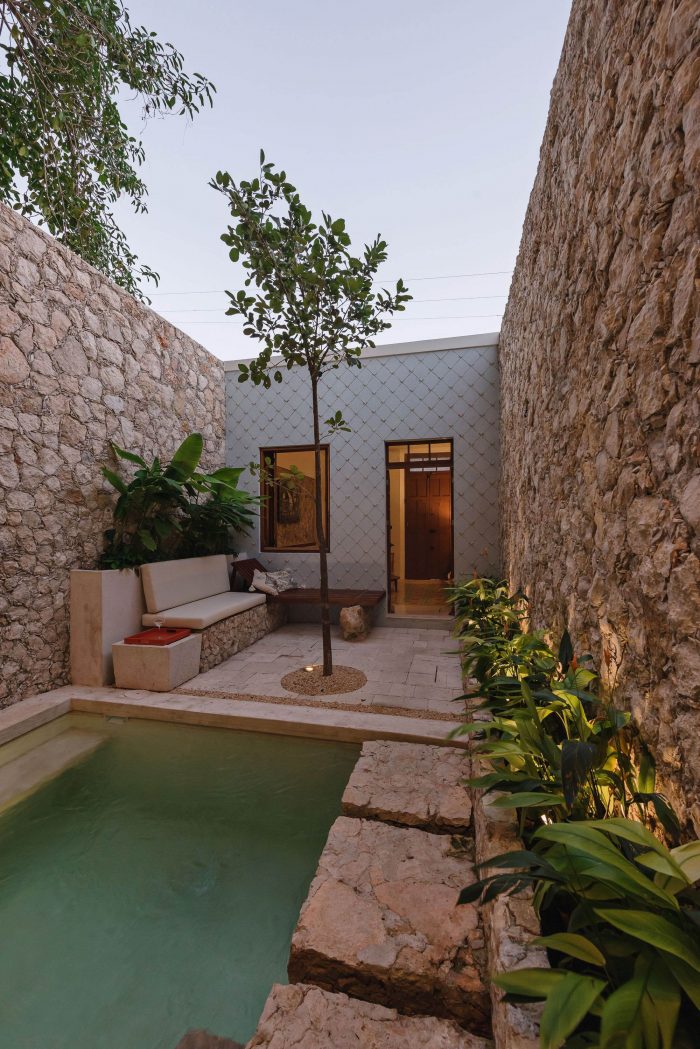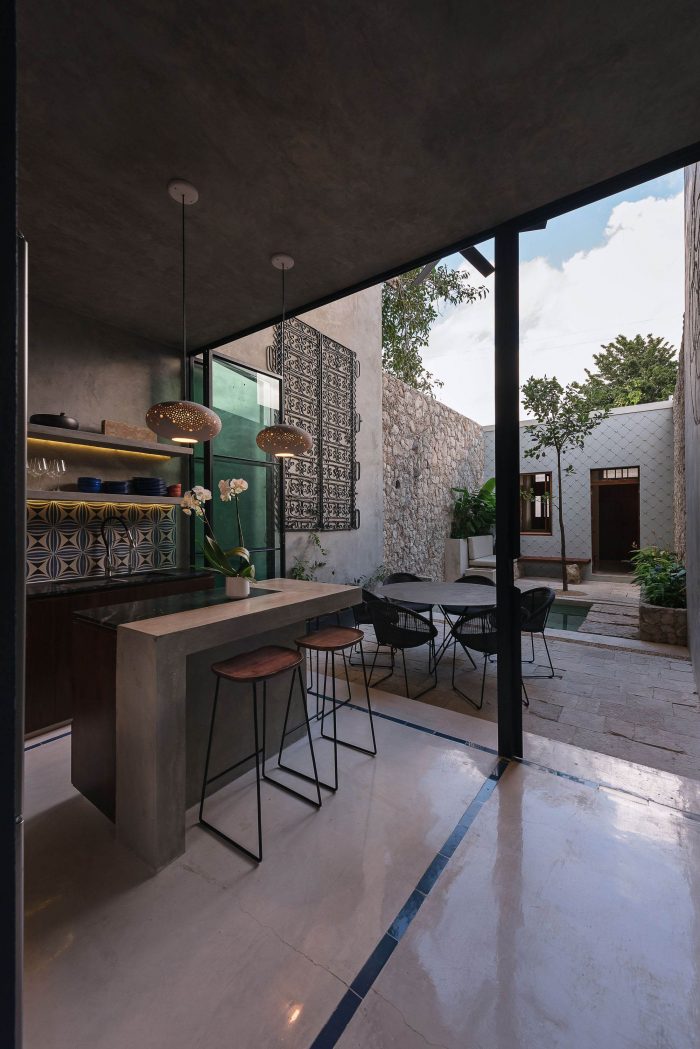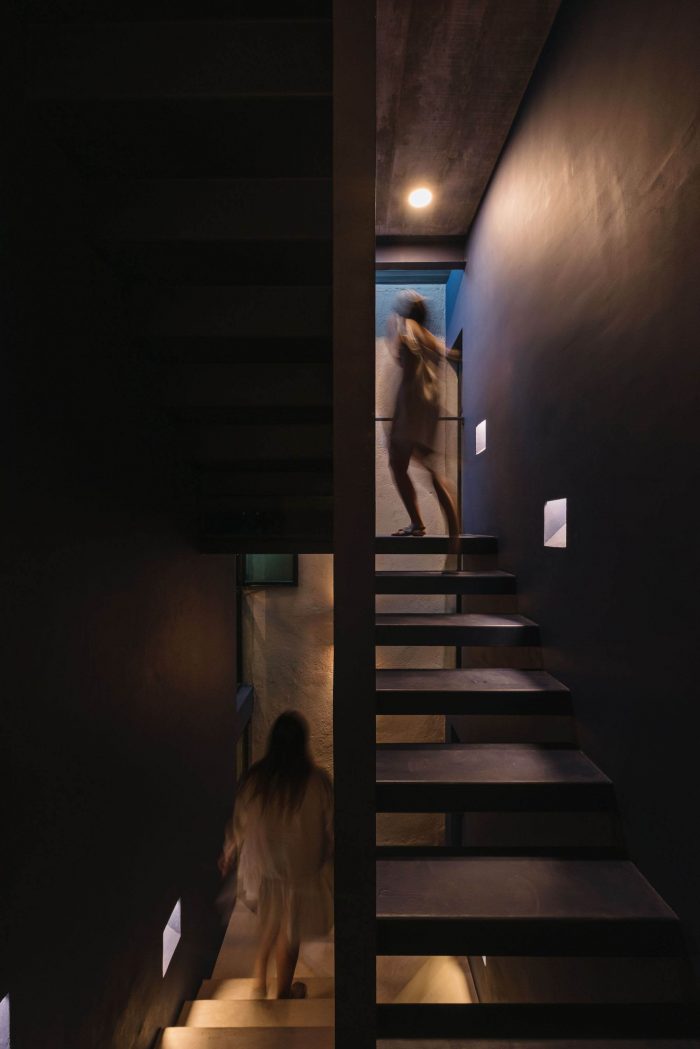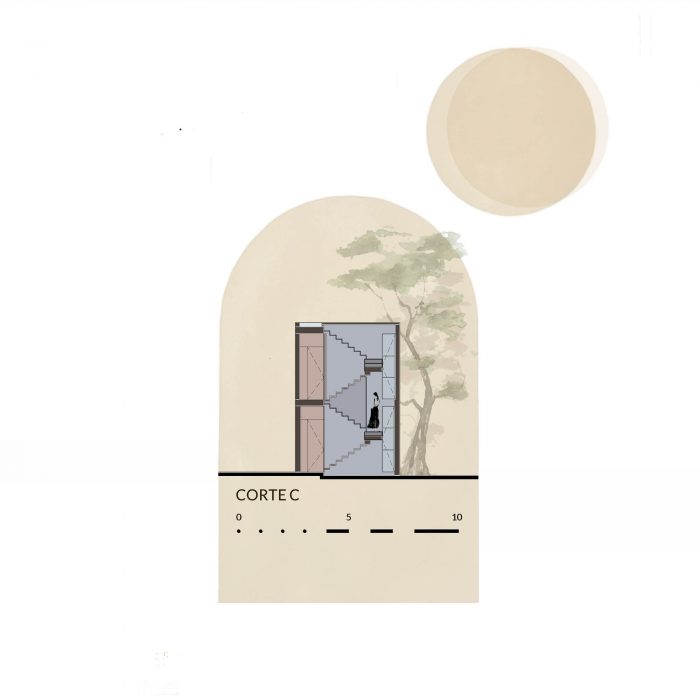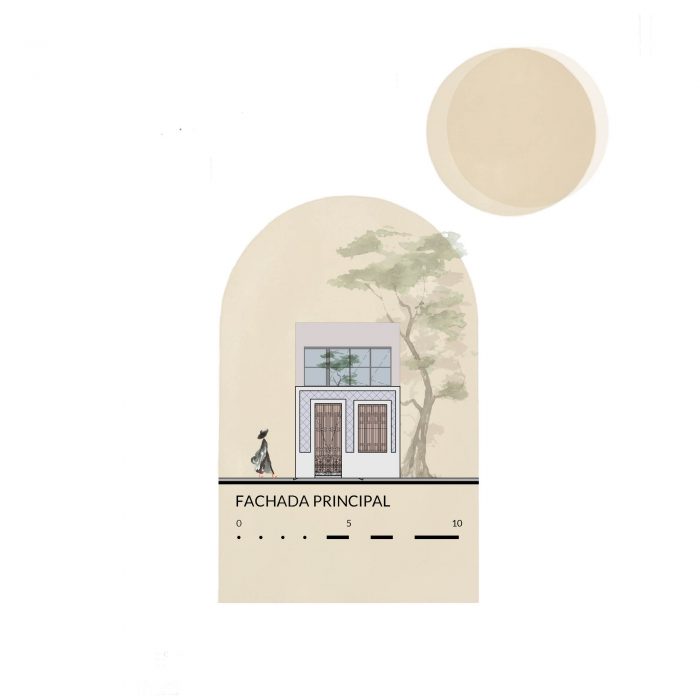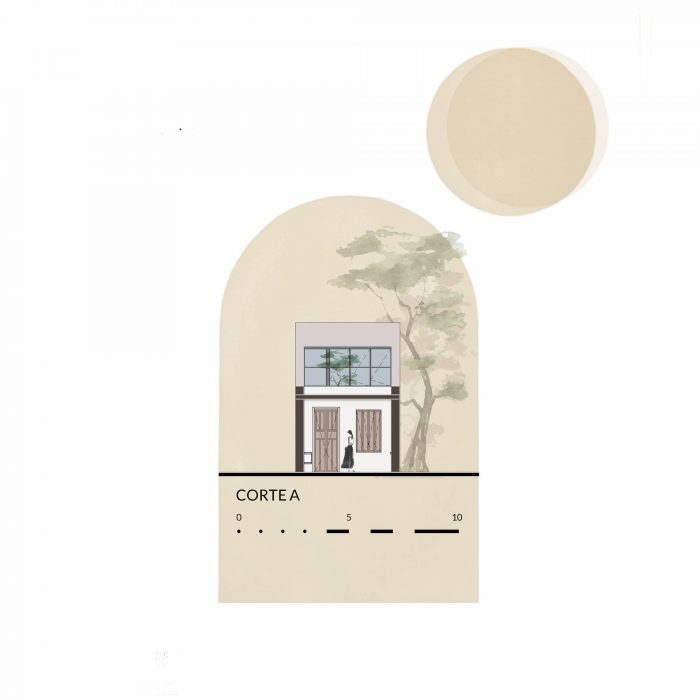项目的概念和名称El Nido代表着巢穴,来自于拉丁语的nidus。这个词指的是鸟类用树枝、稻草和其他元素建造的住所。就像它们建造自己的巢穴一样,这个房子的目标是实现一个可以居住和享受的避难所,不需要太多复杂的东西,通过使用最小和简单的材料,创造一个非常简单但空间上非常丰富的项目。
The concept and name of the project El Nido stands for nest and comes from the Latin word nidus. The term refers to the shelter that birds build with branches, straws and other elements. Just as they make their nests, the goal of this house was to achieve a refuge to be inhabited and enjoyed without major complications, creating a project of great simplicity yet of great spatial richness by using a minimal and simple palette of materials.
Casa El Nido建在一块4.70 x 26.00米的土地上,作为对用户需求的回应,拥有一个产生经验和想法的空间,将一个已有的建筑与一个全新的建筑交织在一起,与一个空旷的空间形成缝合,使新建筑成为居民的一个重要的保护罩。
Casa El Nido is built on a lot of 4.70 x 26.00 meters as a response to the needs of the users to have a space where experiences and ideas are generated, weaving together a pre-existing building with a completely new one, creating a suture with an empty space, giving the new building the prominence as a great protective envelope for the inhabitants.
现有的部分作为房子的一个入口点。它的原始本质被保留下来,有原始的粘土地板、粉刷和油漆墙,留下了石砌墙和粉刷天花板的裸露的金属结构的遗迹。这座建筑容纳了一个内部房间,并将用户引向过渡点和新建筑的方向。
The existing part acts as an entry point to the house. Its original essence is preserved with original clay floors, stuccoed and painted walls, leaving an exposed vestige of the stone masonry walls and stuccoed ceilings with the exposed metal structure. This building houses an inner room and directs the user towards the transition point and towards the new building.
两座建筑之间的缝合点是一个开放的空间,允许观察和衡量完全由磨光的灰色水泥和可折叠玻璃墙完成的现代元素。这个过渡空间容纳了一个小游泳池和一个开放的庭院,周围的花园主要由石头元素组成,包括墙壁和地板。
The suture point between both buildings is an open space that allows observing and dimensioning the contemporary element completely finished in burnished grey cement and foldable glass walls. This transitional space houses a small pool and an open courtyard surrounded by a garden consisting mainly of stone elements both as walls and floors.
这个大的体量容纳了双高的餐厅、厨房区和一间带卫生间的卧室,以及一楼的室内花园,还有一间书房和另一间带完整卫生间的卧室,其逻辑是在房子的前部建立公共区域,在后部建立私人区域。
The large volume houses the double-height dining room, the kitchen area and one bedroom with a bathroom and an interior garden on the ground floor and a study and another bedroom with a full bathroom on the upper floor, with the logic of creating the public areas in the front part of the house and the private ones at the rear.
我们利用空间的基本元素,墙壁、板块和地板,生成两面相邻的承重墙和一块支撑在上面的板块,形成一个大体量,由于使用夹层,可以容纳两层楼。生成的体量在其两端是封闭的,因为需要创造内部空间来容纳日常生活中的不同活动。
We take the basic elements of the space, walls, slabs and floors, and generate two adjoining load-bearing walls and a slab supported on them creating a large volume that can accommodate two floors thanks to the use of a mezzanine. The generated volume is closed at its ends following the need to create interior spaces that host the different activities of daily life.
墙壁和天花板用灰色烧制的水泥覆盖,底层留下白色烧制和抛光的水泥,而楼上则使用竹子地板覆盖。垂直循环立方体将公共区域和私人区域分开,并提供了通往夹层和屋顶平台的通道,在那里的树荫下,创造了一个休息和观察城市的区域。
The walls and ceilings are covered with grey burnished cement, leaving the ground floor with white burnished and polished cement, while a bamboo floor covering was used upstairs. The vertical circulation cube separates the public area from the private and gives access to the mezzanine level and to the roof terrace where an area for rest and observation of the city is created in the shade of a tree.
Architects: Taller Estilo Arquitectura
Area: 144 m²
Year: 2020
Photographs: Tamara Uribe
Manufacturers: Sika, American Standard, Cemex, Vitrum, Carpintería Linares, Comex, Mosaicos La Peninsular, Tecnolite, URREA
Lead Architect: Víctor Alejandro Cruz Domínguez, Iván Atahualpa Hernández Salazar, Luís Armando Estrada Aguilar
Construction:Juan Diaz Cab, Luis Esteban Alonso Carrillo
Structure:Juan Diaz Cab
Collaborators:Silvia Cuitún Coronado, Ana Karen Domínguez Peniche, Zahid Quintal Polanco
City:Mérida
Country:Mexico




